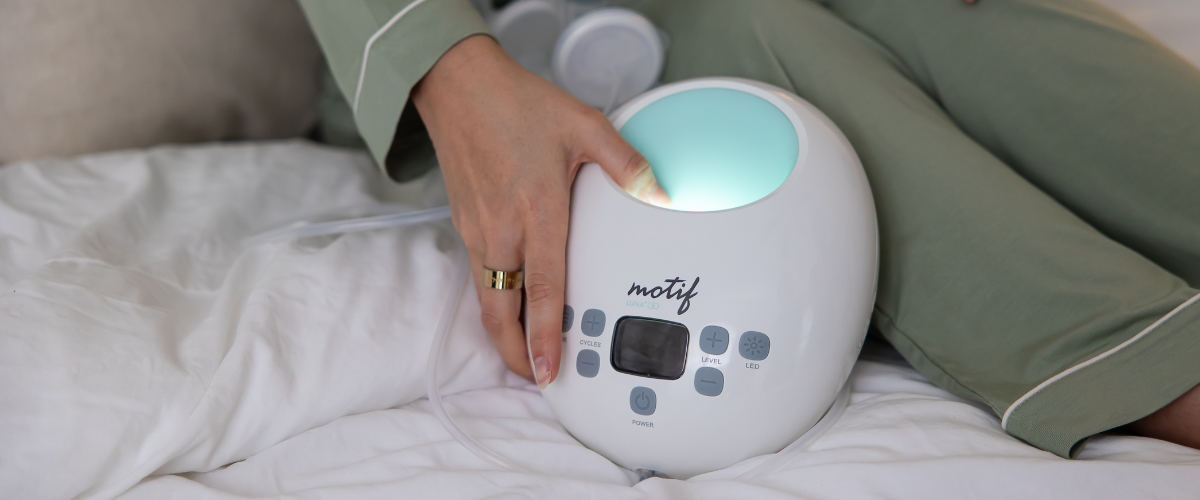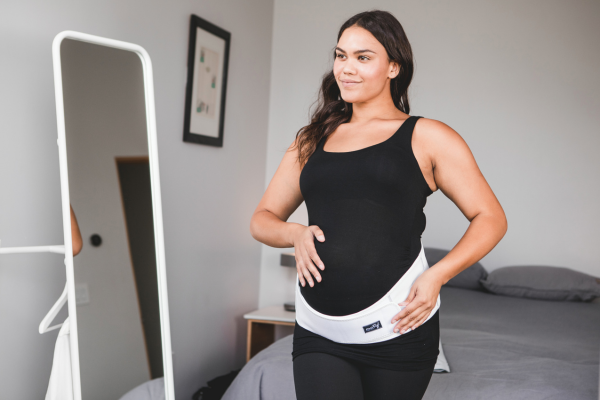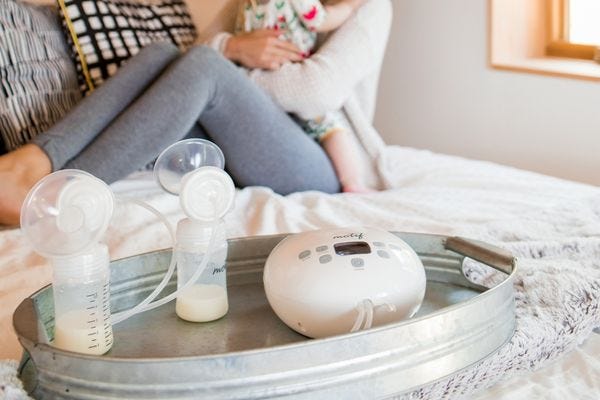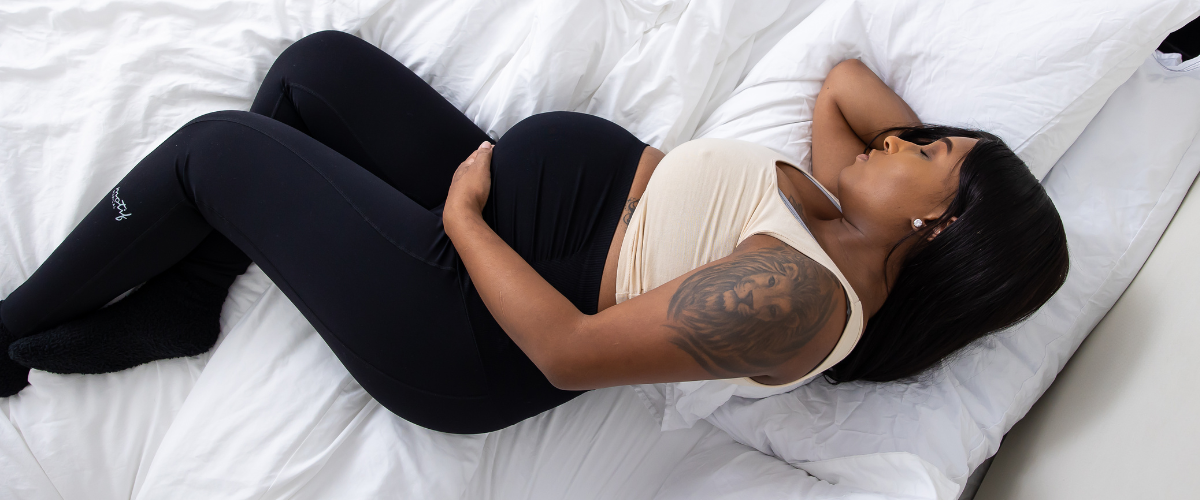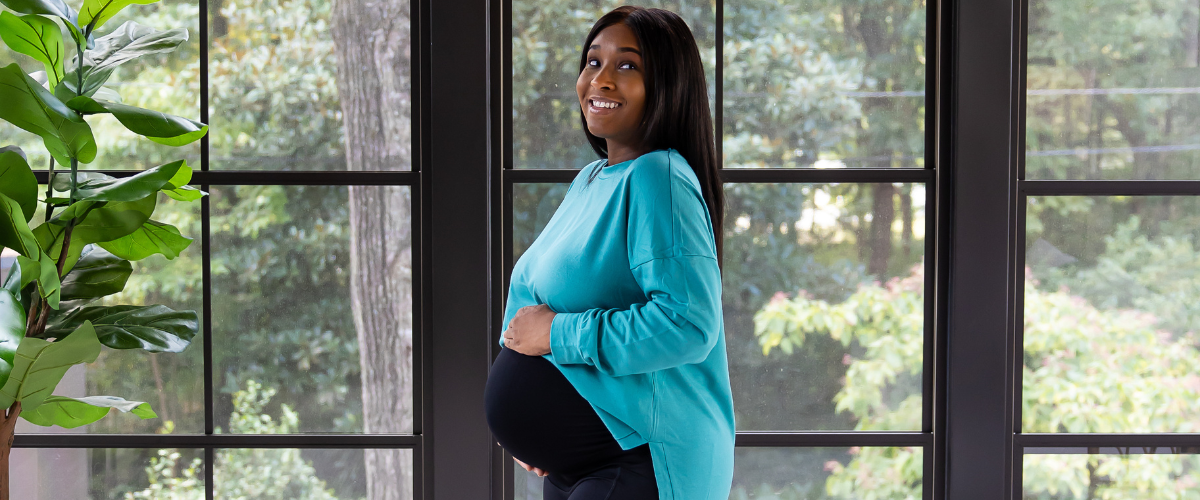Preparing for Labor
Are you looking for a way to naturally induce labor? Maybe you are over the discomfort that comes with an approaching due date. Maybe your doctor is suggesting a medical induction, and you’re looking for natural ways to get labor started. Or maybe you are just really ready to meet your little one. Whatever the case, you’re not alone! A quick internet search produces loads of suggestions for natural methods to start contractions, and many pregnant women are left sifting through information about spicy foods, acupressure, acupuncture, sex, walking, and taking herbs as possible induction methods. One of the most commonly tried methods for labor induction is nipple stimulation. We’ve got you covered with reliable information on the safety and effectiveness of nipple stimulation as a way to jumpstart labor.
What is Induction of Labor?
Labor induction is an attempt to elicit uterine contractions to facilitate birth. The American College of Obstetricians and Gynecologists (ACOG) lists the following as potential reasons for induction1:
-
Your pregnancy has lasted beyond 41-42 weeks.
-
You have significant health problems (problems with the heart, lungs, or kidneys).
-
There are concerns about problems with the placenta such as placenta previa.
-
Your baby has a health problem such as poor growth.
-
Your amniotic fluid has decreased.
-
You have a uterine infection.
-
You have gestational diabetes or if you had diabetes before becoming pregnant.
-
You have chronic problems with high blood pressure.
-
Your water breaks before labor begins.
Different types of induction carry different risks. These risks may include fetal distress as well as more intense contractions and uterine hyperstimulation. There is conflicting evidence regarding the relationship between induction and cesarean section.
Stimulation
Healthcare professionals use the Bishop Score to grade how favorable, or ripe, your cervix is for induction. Depending on your Bishop Score, a medical induction may start with a cervical ripening agent such as Cervidil or Cytotec. These ripening agents contain synthetic prostaglandins which are hormone-like substances that can help prepare the cervix for labor.
When administered vaginally, Cervidil can be removed if negative side effects arise. Cytotec dissolves quickly and cannot be easily removed. In some cases, mechanical dilation of the cervix is attempted with a Foley bulb. With this method, a Foley catheter bulb is inserted into the cervix and filled with saline. The pressure from the bulb causes the cervix to dilate. Sometimes, administering Cervidil or Cytotec or placing a Foley bulb can trigger contractions.
Other methods may be used to start contractions. These include sweeping or stripping the membranes, rupturing the amniotic sac, and administering Pitocin via IV. Pitocin is a synthetic version of the hormone oxytocin. It is important to note that Pitocin does not cross the blood-brain barrier as natural oxytocin does. Some research indicates that Pitocin can interfere with the natural cascade of hormones that normally occurs through labor and vaginal birth.2 This interference could impact breastfeeding as oxytocin is responsible for the milk ejection or “let down” response during lactation.
Can Nipple Stimulation Cause Contractions?
The short answer is YES! However, there’s more you need to know. Nipple stimulation causes the release of oxytocin which can trigger contractions or strengthen contractions if labor has already begun. Research evidence reveals that nipple stimulation, either with your hands or a breast pump, can impact cervical changes and trigger contractions if your body is ready for labor to begin.3
In preparation for labor, the cervix softens, thins, and begins to dilate. This is often referred to as cervical ripening. A 2014 study found that moms who began nipple stimulation at 38 weeks improved their Bishop Scores, went into labor sooner, and reduced their risk of c-section and postpartum hemorrhage when compared to moms who did not use nipple stimulation.4
Additionally, a 2015 study found that those participants who used nipple stimulation experienced shorter first, second, and third phases of labor than those who received uterine stimulation or had no intervention. 5
What about labor augmentation?
Augmentation is sometimes suggested when contractions seem to be too weak or the healthcare provider feels progress is not moving quickly enough after labor has started spontaneously. The most common methods used to augment labor include rupturing the amniotic sac and administering Pitocin via IV.
Few studies have looked at nipple stimulation groups, specifically, for augmentation of labor.
However, we can draw from the studies regarding labor induction that nipple stimulation is a safe and viable option for augmenting labor as it increases oxytocin levels. Nipple and breast stimulation is one of the oldest methods of labor augmentation that has historically been used by midwives throughout the centuries. Other ways to naturally get labor moving again include emptying your bowels and bladder, walking, squatting, bouncing on a birth ball, and changing positions.
Is Pumping to Induce Labor Safe?
The short answer here is, IT DEPENDS. Studies indicate that nipple stimulation is a suitable induction method for low-risk pregnancies. If you’re interested in pumping to induce labor, be sure to discuss this with your healthcare provider. Your doctor or midwife can advise on the safety of nipple stimulation based on your specific situation. All induction methods carry some level of risk. Triggering the body’s release of natural oxytocin can reduce the need for Pitocin (synthetic oxytocin) and the potential risks that come with its use.
What type of pump is best for inducing labor?
Think ahead to how you plan to use your breast pump once baby is born. Features such as a powerful motor and rechargeable battery are at the top of most mom’s pump wish list.
The Motif Luna with Battery is an ideal option to use for inducing labor and pumping in the postpartum period because it is highly effective. The rechargeable battery makes it easy to use in bed, on the couch, or at the hospital. Check with your insurance about which pumps are covered. Some insurance plans won’t cover your breast pump until your last trimester or after the baby is born, but an inexpensive manual pump can do the trick!
What is the method for pumping to trigger labor?
- Talk with your healthcare provider about your desire to start labor naturally. Discuss the risks and benefits of your specific situation.
- Choose your pump. For the most comfortable and effective results, choose a flange size that is within 0-3mm of your nipple size. (Your flange size might change after birth, so be sure to reassess.)
- Sterilize your pump parts per the manufacturer's instructions and assemble them for single pumping. If your pump has a rechargeable battery, plan to make sure it is fully charged.
- Consider applying a warm compress and gently massaging or stroking your breasts before pumping. This helps start the process of oxytocin release. Pump one breast at a time for 15 minutes.
- Continue switching between your breasts every 15 minutes until regular, strong contractions begin. Use the maximum comfortable suction level on your pump.
- If after pumping for one hour no contractions develop, stop pumping and try again in a day or two.
- Once contractions begin, stop pumping and observe.
- If contractions weaken, pump each breast (one at a time) for 5 minutes to help strengthen them.
- Stay in contact with your healthcare provider concerning your progress.
*Don’t be surprised if you see a little bit of colostrum while pumping. Your body starts to make this first milk as early as 16-20 weeks into your pregnancy. Colostrum is often thick and sticky and it comes in small volumes. You can collect your colostrum to offer to the baby later.
Key Takeaways
- Breast pumping can trigger the start of labor by eliciting the release of oxytocin.
- Nipple stimulation can be an effective way to speed up labor or strengthen contractions.
- Nipple stimulation is considered a safe induction method in low-risk, term pregnancies.
- Discuss the risks and benefits of pumping to induce labor with your midwife or ob/gyn.
- All types of induction carry risks, but nipple stimulation can be a safe alternative to medical inductions.
- Single pump for no more than 15 minutes per breast to help get contractions started.
- If contractions don’t start after an hour of pumping, try again in a day or two.
References:
- https://www.acog.org/womens-health/faqs/labor-induction
- https://www.researchgate.net/publication/322211922_Intrapartum_Administration_of_Synthetic_Oxytocin_and_Downstream_Effects_on_Breastfeeding
- https://doi.org/10.1002/14651858.CD003392.pub2
- https://doi.org/10.1155/2014/695037
- https://doi.org/10.1111/wvn.12116
Information provided in blogs should not be used as a substitute for medical care or consultation.


